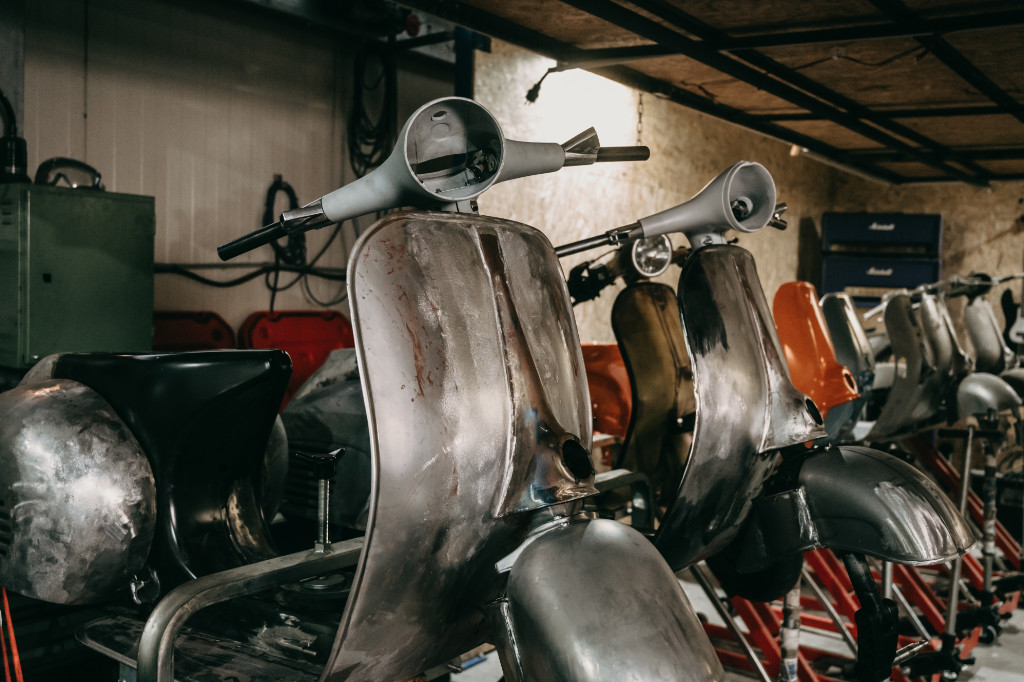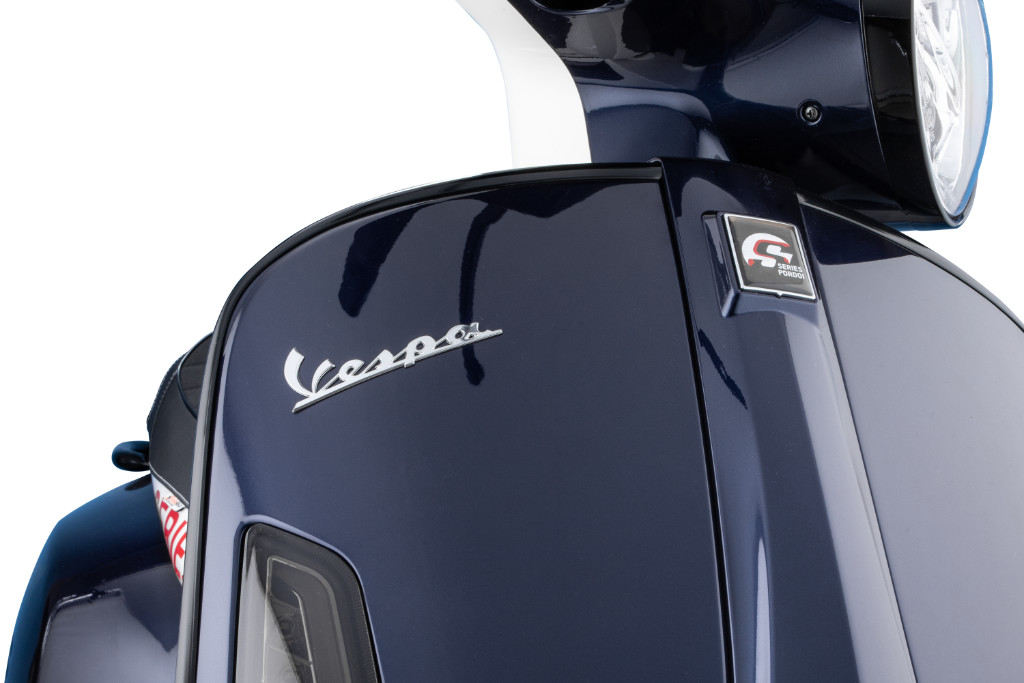For decades, the Vespa has been considered the cult object when it comes to scooters. The reasons for this are many and at the same time understandable. Aesthetic appearance paired with top equipment and the best functionality make the Italian scooter a collector’s item. It goes without saying that a lot of technical and visual changes have to be made over the course of almost eight decades in order to keep up with the times. One of these changes is the addition of fairing parts, which catches the eye at first glance.
Sheet metal as the starting point for development
Until the mid-90s, Vespas were primarily made of sheet metal parts. With the PK 50 XL2, plastic parts were used on a larger scale for the first time. The reasons for this were obvious: the versatility of plastic parts should serve the further development of the Vespas. The previously used sheet metal parts were replaced by plastic fairings due to their lack of flexibility and their heavy weight. Plastics stand out not only in their versatility, but also in their processing possibilities. Another significant reason, which many Vespa riders with older models have probably already encountered, is brownish colour.
This is of course rust. As soon as moisture begins to oxidise in combination with oxygen, rust develops. This is often a big problem, especially with the thin sheet metal of Vespas, as rust can spread very quickly and have serious effects, not only visually. Larger rust holes in the tread plate or leg shield lead to complicated welding work on the bodywork.

From sheet metal to plastic
Particularly because of the aforementioned problems, the decision to switch the trim parts of the Vespas to plastic was probably an easy one. The wide range of processing options ensures a similar look while at the same time reducing weight and increasing durability. The only significant disadvantage is the fading of the plastic parts due to various environmental influences. Sunlight in particular causes plastic trim parts to fade. This can become a problem especially when damaged parts have to be replaced. The actual colour tone then differs from the newly painted part and is therefore visually unappealing. However, these effects can be prevented by continuous and conscientious paint care.
On the other hand, plastic parts are relatively easy to obtain, as they can be reproduced in small quantities. This means that replacements for damaged parts are quickly and easily available. SIP Scootershop offers a wide range of fairing parts for this purpose.
Caution when dismantling the fairing
Ambitious Vespa mechanics are known to dare to carry out many repairs on the scooter themselves. While it was relatively easy to get at the relevant parts of the old models because of the self-supporting sheet metal frame, this is somewhat more problematic with the new fairing parts. Often, some parts of the fairing have to be dismantled first to get to the spot. To do this, the respective screws must be carefully removed. A well-stocked toolbox is recommended for this, as the screws used have different heads. From T20, T25 to classic slotted or cross screws, there are different types available. In addition, great care should be taken when dismantling, as the parts are often still inserted into each other. Special care should be taken here so that no plastic parts break off.
Unfortunately, we cannot provide general instructions for dismantling the respective fairing at this point. Due to the large number of different models, no uniform procedure is possible. Instead, everyone should familiarise themselves with the appropriate instructions.
Even if die-hard metal scooter fans have a negative view of modern Vespas, they are no less appealing or iconic. After all, the modern and at the same time aesthetic plastic coverings ensure that the Vespa myth can continue to be experienced at the cutting edge.



